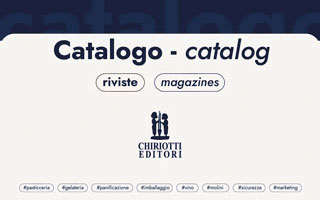
Handy packaging that is microwaveable to be able to heat up meals in a very short time; packaging that is visually appealing, presents the content well, helps to increase the durability, and contains the intensity of flavor over a long period of time; packaging that is light but also easy to handle. These characteristics already belong to the everyday life of consumers. Accordingly, the pressure on producers of films to meet the continuously rising requirements regarding optics, handling and barrier properties, as well as conservation of resources and sustainability is high. Requirements do not only increase for flexible packaging but also for bags and sacks, shrink and stretch films, agricultural films, and other films. But the efforts are worth it: Sales of packaging films will presumably reach a volume of approx. USD 250 billion until 2024.
The market research institute Ceresana analyzed the global market for plastic films of all kinds already for the second time. In defining films, sheets, and boards, all products from wafer-thin films to thick, rigid boards can be found. The focus in the present study is on flexible films. These include, for example, packaging for foodstuffs but also for non-food products such as textiles, stationary, and industrial goods. Additional analyses are provided of the application areas bags / sacks and shrink / stretch films. Besides the packaging market, other segments play a major role as well, especially agricultural films, construction films, films for office and stationary goods, technical insulation films, as well as other industrial films. This study does not cover sheets and boards as used in the manufacturing of rigid packaging, e.g., boxes, cartons, and cases. Rigid sheets and boards utilized in construction and industrial applications are not included, either.
Packaging trends as drivers of growth
Product individualization does not only occur on the level of the actual consumer good but also to a large extent in the segment packaging (for example the campaigns for Coca Cola or Nutella). Since digital printing systems nowadays do not need any complex printing plates and become more and more efficient, completely new possibilities for packaging design arise. Requirements for the optimal use of digital printing are, however, films that are able to be printed on easily, fast, and optically of high quality.
Increasingly complex packaging is especially in demand for pharmaceutical products and fresh foodstuffs. So-called MAP (Modified Atmosphere Packaging) is supposed to protect the foodstuffs from a fast decay and to increase the date of minimum durability with an artificially created protective atmosphere. Another segment where innovative packaging that allows for a fast and clean preparation of the meal is presented constantly is ready-made meals. Microwaveable packaging is a growing segment as well as stand-up pouches or individual packaging that offer a better dosing and durability.
Since organic foodstuffs and sustainability gain more and more importance for the consumers, the market for packaging that is considered as ecological is growing rapidly. Especially disposable food packaging offers a great potential for the usage of bioplastics. Ceresana expects the demand for bioplastics in Europe in the segment packaging to grow by over 15% p.a. in the upcoming years. Packaging made of recycled plastics will also increase as well.
BOPET and BOPP continue to be in demand
Biaxially oriented PET films (BOPET films) show a high transparency, high-quality optics, and a high tensile strength – very thin and light films can be made from this material. For even more reductions of thickness and weight of films (downgauging), BOPET plays a major role. BOPET helps to increase the durability of perishable food with its barrier properties and is, for example, used for aroma-proof packaging. Thin BOPET films of about 8 to 50 µm are mainly used for FMCG (fast-moving consumer goods) packaging, thicker films of up to approx. 350 µm are rather used for stationary or electronic goods.
Biaxially oriented polypropylene films (BOPP films) are mainly utilized for foodstuffs packaging. However, BOPP films are not readily heat sealable. As this is a prime requirement for packaging films, BOPP is normally given a surface coating of a heat sealable polymer such as a coextruded PP random copolymer. Copolymers for heat seals need to exhibit a high gloss and transparency. Coating or coextrusion increases the barrier properties of BOPP film, decreasing its permeability to gases. Common barrier polymers are ethylene vinyl alcohol, polyvinylidene chloride, and polyamide. Hot sealable BOPP films can be used for, e.g., packaging of foodstuffs, baked goods, snack products, pastas, dried fruits, potato products, stationary, textiles, cosmetics,and medical products. Analysts of Ceresana expect a growth of, on average, 4.0% per year in the upcoming eight years for BOPP films.
Numerous influential factors lead to a complex market structure
Besides the trends of the FMCG packaging market, numerous other factors influence the demand for plastic films on several national markets as well. For example, many countries try to contain the demand for disposable carrier bags. Demand for secondary and transport packaging such as shrink and stretch films depends to a large extent on the macroeconomic development and the consumer climate of the respective country. In some countries, the efforts to intensify the agriculture propel the use of agricultural films. And, last but not least, the demand for construction films is closely related to the order situation of the individual construction industries. Since all of these factors can vary considerably from country to country, the present study gives an overview in the respective country profiles.








